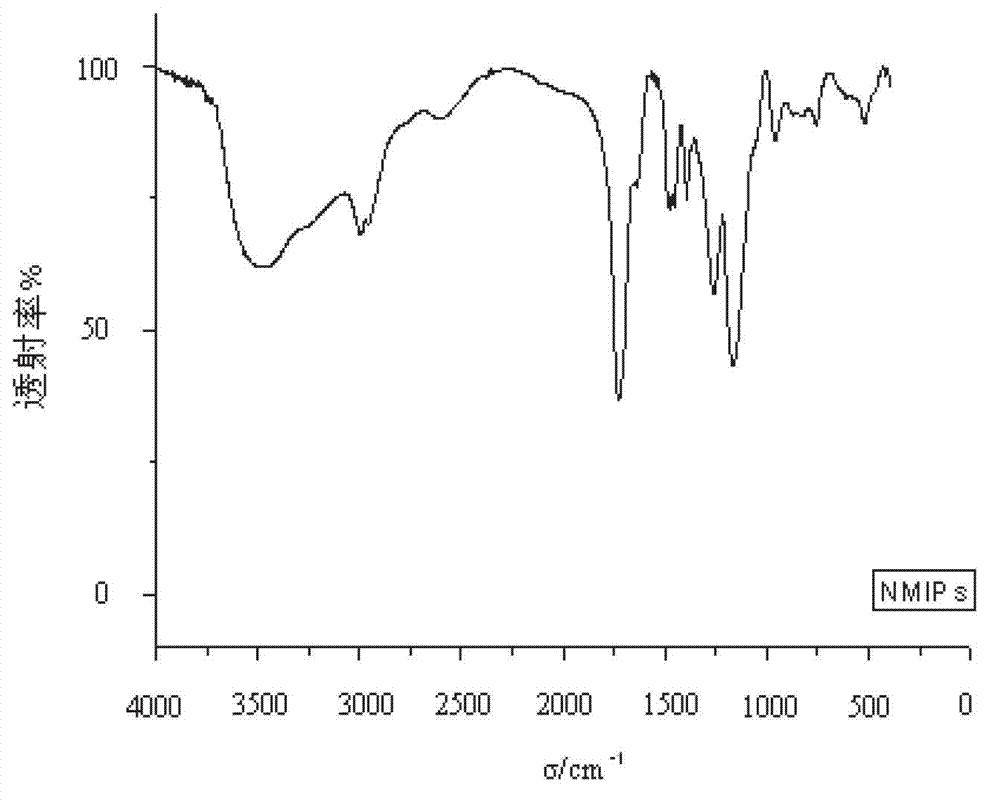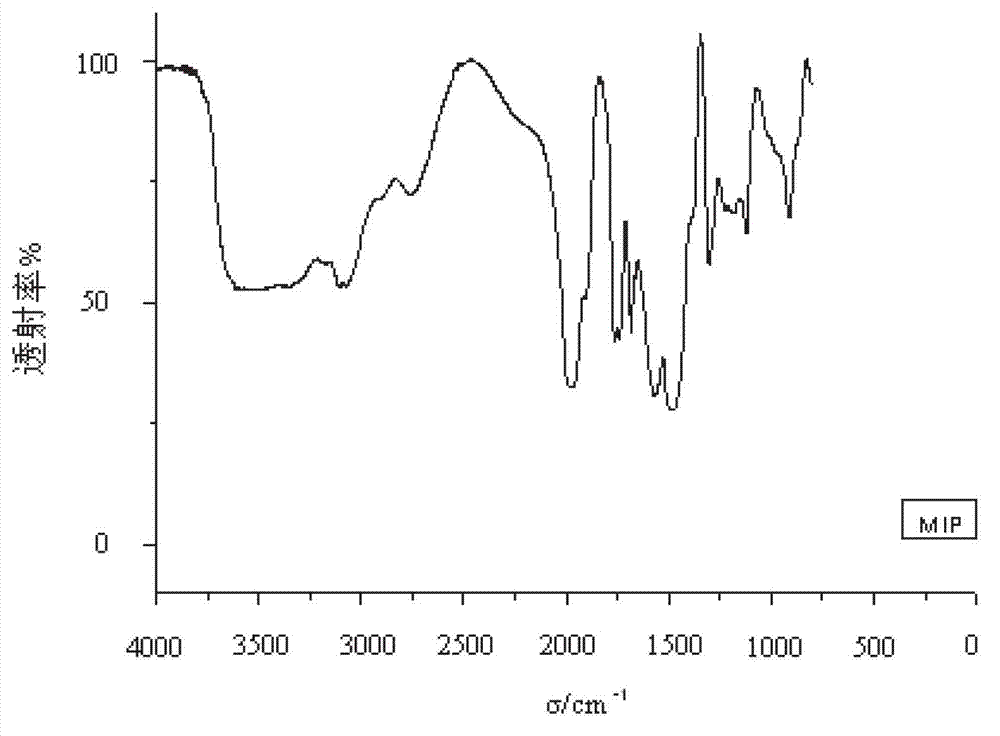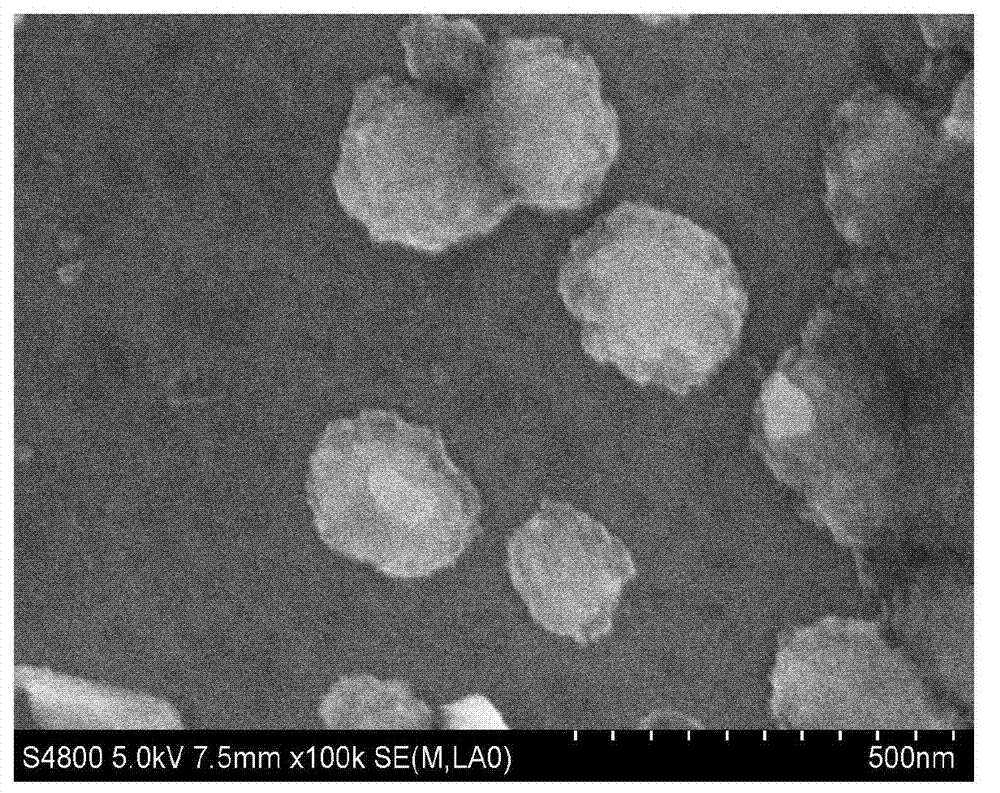Preparation method and application of molecularly imprinted polymer of penicillin antibiotics and intermediate of penicillin antibiotics
A technology of imprinting polymers and molecular imprinting, applied in chemical instruments and methods, other chemical processes, etc., to achieve the effect of good identification performance
- Summary
- Abstract
- Description
- Claims
- Application Information
AI Technical Summary
Problems solved by technology
Method used
Image
Examples
Embodiment 1
[0021] (1) Add 5 mL of methanol, formic acid, ethanol, dichloromethane, N,N-dimethylamide, methanol / water (7 / 3), acetonitrile, acetonitrile / water (7 / 3), acetonitrile / Water (8 / 2) was used as the solvent to investigate the dissolving effects of different solvents on 6-APA and MAA, see Table 1. Because the template molecule 6-APA is not completely soluble in organic solvents, and slightly soluble in water, it decomposes with alkali and is relatively stable to acids, so formic acid was selected as the porogen.
[0022] Table 1 Dissolving effect of different solvents on 6-APA and MAA
[0023]
[0024] (2) The effect of the ratio of the amount of functional monomer MAA to the template molecule 6-APA: the experiment fixed the amount of the template molecule, changed the amount of the functional monomer, and investigated the molar ratio of the functional monomer to the template molecule as 3:1, 5:1 , 7:1, and 9:1, the interaction between the functional monomer and the template mo...
Embodiment 2
[0038] The packing effects of MIPs and diatomaceous earth with mass ratios of 1:1, 2:3, 2:1, and 3:1 were compared. The rate of the sample solution passing through the molecularly imprinted solid phase extraction column (MISPE) and the adsorption effect on the template molecules were compared, and the results are shown in Table 3.
[0039]Table 3 Selection of Preparation Conditions for Molecularly Imprinted Polymer SPE Columns
[0040] Polymer: diatomaceous earth 1:1 3:2 2:1 3:1 Filtration rate (mL / min) 2 1.6 1 0.3 Adsorption capacity (umol / g) 15.6 19.2 24.5 25.0
[0041] It can be seen from Table 3 that when the ratio of MIPs to diatomaceous earth is 3:1, the adsorption effect of MISPE is better, but the sample loading rate is too slow. When the ratio is 1:1 and 3:2, although the sample passing rate Faster but less effective. Therefore, the optimal ratio is chosen to be 2:1.
[0042] Preparation of 6-APA molecularly imprinted solid-phase...
Embodiment 3
[0044] (1) Accurately weigh 0.22 g of the template molecule 6-aminopenicillanic acid (6-APA) and dissolve it in a container containing 10 mL of formic acid, add 0.44 mL of functional monomer methacrylic acid (MAA), and incubate at room temperature Vibrate in an ultrasonic instrument for 30 minutes to fully combine the template molecules with the functional monomers; then add 3.86 mL of cross-linking agent ethylene glycol dimethacrylate (EDMA) and 0.05 g of azobisisobutyronitrile (AIBN) into the container , mix evenly, ultrasonically oscillate for 15 min, and fill the container with N 2 And sealed, heated in a 60 °C water bath for 24 h to obtain a white solid polymer;
[0045] (2) Crush the white solid polymer obtained in step (1), grind it through a 220 mesh (particle size 0.065 mm) sieve, use acetonitrile-water or volume ratio of 8:2 or 7:3 or 6:3 The template molecule 6-APA in the polymer was eluted with a 6:4 methanol / acetic acid solution, and then the solvent was eluted w...
PUM
 Login to View More
Login to View More Abstract
Description
Claims
Application Information
 Login to View More
Login to View More - R&D
- Intellectual Property
- Life Sciences
- Materials
- Tech Scout
- Unparalleled Data Quality
- Higher Quality Content
- 60% Fewer Hallucinations
Browse by: Latest US Patents, China's latest patents, Technical Efficacy Thesaurus, Application Domain, Technology Topic, Popular Technical Reports.
© 2025 PatSnap. All rights reserved.Legal|Privacy policy|Modern Slavery Act Transparency Statement|Sitemap|About US| Contact US: help@patsnap.com



